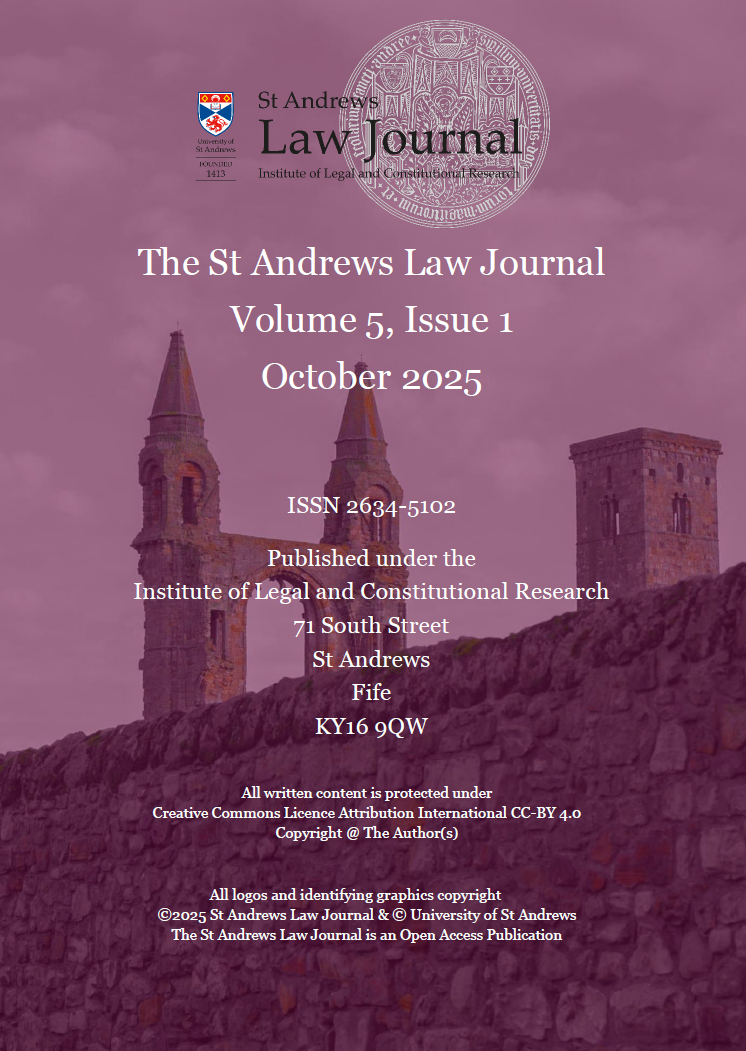Top-Down to Bottom-Up: A Critical Analysis of the Approach to the Principle of Common but Differentiated Responsibilities and Respective Capabilities under the Paris Agreement
Main Article Content
Abstract
Considered to pose the “biggest threat modern humans have ever faced”, climate change is endangering the livelihoods of humans and global ecosystems on an unprecedented scale. The systemically unjust nature of the climate crisis is widely acknowledged, as developing countries often face the most threatening consequences of climate change, while, owing to the deep-rooted effects of the colonial period, they have often contributed the least to greenhouse gas (GHG) emissions, both historically and in the present day.
International climate law seeks to address this structural inequality through incorporating differential treatment into its provisions, primarily through the principle of common but differentiated responsibilities and respective capabilities (CBDR-RC). Formally introduced through the 1992 United Nations Framework Convention on Climate Change (UNFCCC), which continues to shape the foundations of international climate law, CBDR-RC is considered to be “the most significant guiding principle in the international climate change regime”, and has undergone significant evolution in its application since the enactment of the Paris Agreement in 2016. As such, the principle has shifted in approach from strict top-down differentiation to a flexible bottom-up process of self-differentiation, guided by the publication of individual Nationally Determined Contributions (NDC) documents by each Party.
The purpose of this article is to provide a critical analysis of the bottom-up approach to CBDR-RC under the Paris Agreement, determining the extent to which such an approach weakens the normative status of the principle under international law. To this end, it will begin by exploring the role of differentiation and the evolution of CBDR-RC in international climate law, discussing its application under both the UNFCCC and the Kyoto Protocol to the UNFCCC, which was adopted in 1997. The article will then present CBDR-RC under the Paris Agreement, analysing select NDC publications to determine the efficacy of its application, before critically analysing this evidence. In doing so, it argues that the bottom-up approach to CBDR-RC under the Paris Agreement has diluted the normative force of the principle, creating a fragmented system that relies heavily on political peer pressure rather than legal accountability. The article further argues that this undermines the status of CBDR-RC as a foundational principle of international climate law, presenting serious challenges for equity, transparency, and ambition under the regime. In light of such analysis, the article will then present recommendations for reform to strengthen CBDR-RC under the Agreement, through enforcing a clearer common structure for NDCs and enhanced oversight mechanisms, before making concluding remarks.
Article Details

This work is licensed under a Creative Commons Attribution 4.0 International License.
Authors who publish with this journal agree to the following terms:
- Authors retain copyright and grant the journal right of first publication with the work simultaneously licensed under a Creative Commons Attribution License that allows others to share the work with an acknowledgement of the work's authorship and initial publication in this journal.
- Authors are able to enter into separate, additional contractual arrangements for the non-exclusive distribution of the journal's published version of the work (e.g., post it to an institutional repository or publish it in a book), with an acknowledgement of its initial publication in this journal.
- Authors are permitted and encouraged to post their work online (e.g., in institutional repositories or on their website) prior to and during the submission process, as it can lead to productive exchanges, as well as earlier and greater citation of published work (See The Effect of Open Access).

